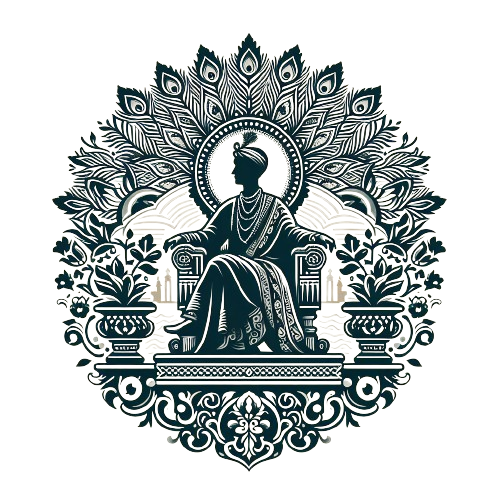1526: A Pivotal Year in World History and the Birth of the Mughal Empire
That year, 1526, will go down into the annals of history as a milestone, to say the least. It wasn’t just the passage of another year, but a valuable turning year, which saw the emergence of a lot of monumental events that redrew the map of empires, instigated significant social and political transformations, and created the possibility of another history entirely.
Then 1526 turned out to be a pivotal year in the Indian subcontinent with the rise of the Mughal empire, a dynasty that was to be a bearer of great historical and national status for centuries to come. And even though the story of 1526 is beyond the physical borders, it is powerful because it connects us not only to an event in history but also to one another. Even on different continents, the theme of last year’s events kept interconnecting in a compelling world account perceived as a chaotic storm.
Setting the Stage: A World in Flux
To grasp, in all fairness, the 1526 effect on India, I suggest that we, starting with a bit of context, take a wider perspective of the world. Picture the world ready for revolution, and imagine the backdrop of this drama that would be telling a story with roles from all over the world.
Europe on the Brink of Change
Resistance was building up and rumors were spreading about the supreme power wielded by the Catholic Church throughout the continent of Europe. In 1526 a German monk whose name was Martin Luther set Europe on fire again with his manuscript entitled The Ninety-Five Theses, a fearless and seemingly destructive attack on the church institutions. The printing press, an invention that was a true revolutionary for its time, brought Luther’s message into the spotlight and contributed to the story’s radical ideas becoming known. This signaled the start of the Protestant Reformation, which was a religious revolution that disrupted the Catholic church’s monopoly for good and contributed immensely to the change in European spiritual aesthetics for centuries.
The Ottoman Empire at its Zenith
At the same time, however, the Ottomans were doing well in the power center in the east. Through the maverick and sometimes controversial ruling of Sultan Suleiman the Magnificent, the Turkish Empire was established as a major power in 1526. Their massive area covered the Three Continents which was home to diverse cultures and people. They successfully built a vast trade network. Nevertheless from under this sedulous claim to power, fissures were seen to be emerging. Deteriorating order provoked clashes between altruistic governance forces and European powers in the west and the rise of the Safavid Dynasty in the east. By the very nature of this atmosphere, they were planting the seeds of future conflict.
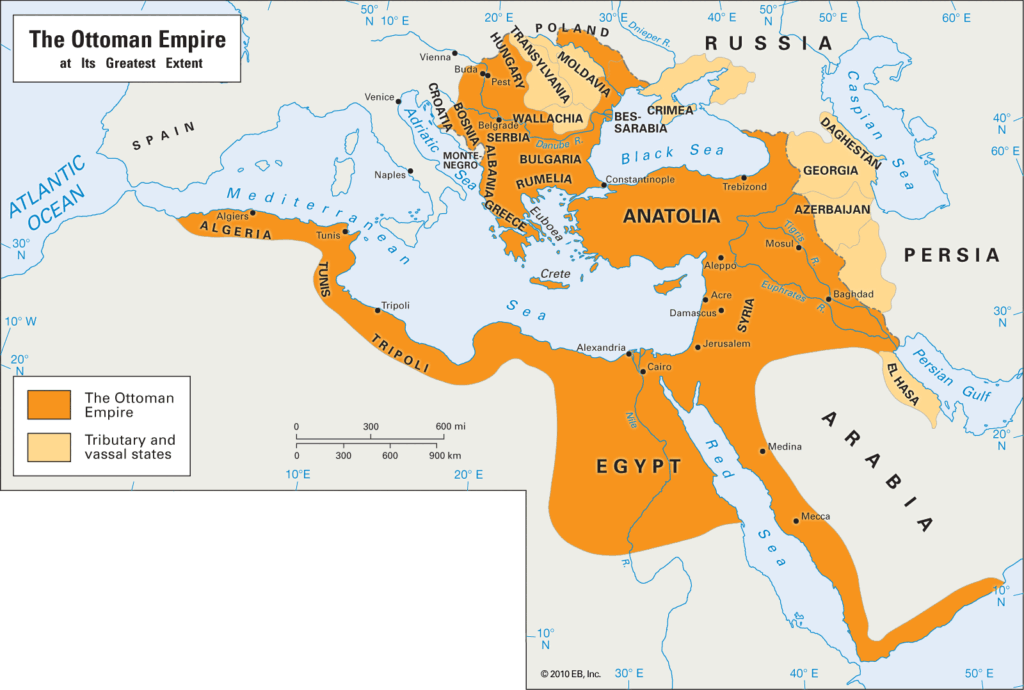
Turmoil in Central Asia
Central Asia, the homeland of the founder of the Mughal Empire Babur, a region often in the middle of power struggles, was going to be the homeland of the founder of the Mughal Empire Babur, a region that was constantly torn apart by power struggles. For the nomadic tribes, the question was not only about control of the plains but also about the fall of established dynasties and the triumph of the up-and-comers’ ambition. A stable state of peace would have very likely changed the path of Babur’s life forever, which ultimately ceased in that fateful trip toward India that destroyed the status quo.
The First Battle of Panipat 1526: A Watershed Moment in India
During times when the perturbations of destiny trembled not only on, but over the entire Earth, India also encountered a singular event – The First Battle of Panipat. It was fought on the desolate plains of North India, it was the decisive climax moment of the political evolution of the country ever after.
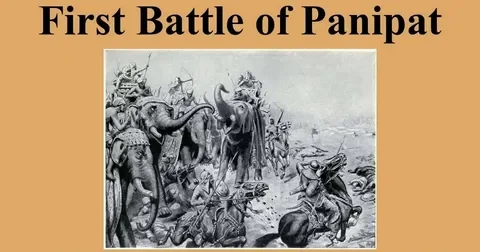
The Lodi Dynasty and a Fractured Subcontinent
In the year 1526 India drew a picture of divisions living in conflict and without peace. The Upar-Lodi narrative, situated in Delhi, had become a weak shadow of the previous period which was constantly suffering from internal strife and losing its holdings. While the regional states had found it easier to act more independently, having profited from the decline of the central government, they nevertheless set to divide the Empire and seize their fiefdoms.
In addition to the challenges of such a diverse population, the Rajput states advanced their rivalry and controversies that made the already-complicated situation even more difficult. This political disunity created an empty seat of power, a vacuum of power, an opportunity waiting to be taken by a determined adventurous person ready to fill the seat.
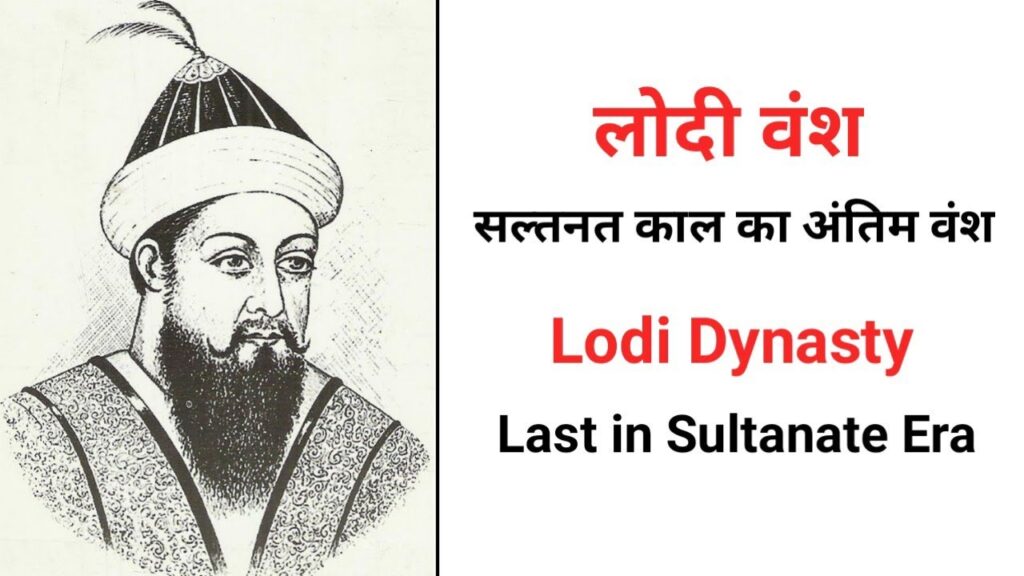
Babur: A Descendant of Conquerors
On his stage steps Babur, a predestined ruler who would write a new page in the history of India. Descent to both Genghis Khan the legendary and first major conqueror in history, and Timur Lungzkhan, also known on the battlefield as Timur the lame, the creator of one of the biggest and most central empires in history, Babur was a warrior since birth. By then He had already lost his homeland in Central Asia, always on movement to find a source of his power. The prospect of India being the source of great material wealth and the internal rifts among its rulers certainly would have attracted Babur like a flame would the moth, presenting him with the unique chance of creating his domain.
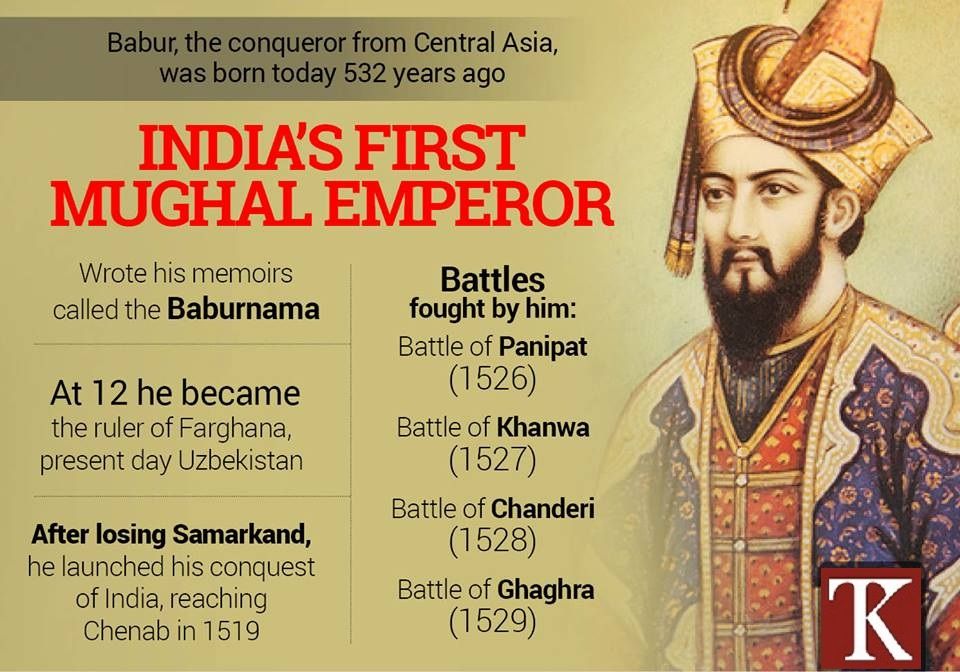
The Course of the Battle and a Decisive Mughal Victory
The conflict was brewing into a collusion of the strongest on the open grounds of Panipat in April 1526. The Mughal army of Emir Babur comprising about 12000 men fired as a well-drilled force, opposed a much larger Lodi troop of 40,000—100,000 soldiers. The numerical disadvantage, however, was no problem for Babur thanks to what could be called his secret weapon – military know-how and high-tech weapons.
Babur’s Innovation: The Tulughma Formation
First, Babar, a military strategist by excellent, gave his soldiers a new formation, named Tulugm which signifies a close coupling among the troops. This historical concept was grounded in the tactical versatility of a central organized force, accompanied by two wings acting as the sharp ends of a three-pronged attack. The core of the military, which included trained bowmen and warriors, became the pillar and the main support of the army. The outflanking strips made of the lighter cavalry carrying bows and muskets were necessary for trapping and enveloping.
The Advantage of Gunpowder
When it comes to Mughals being superior to others, they possessed the most proof due to their use of gunpowder technology. The Lodi army focused mainly on the typical assault weapons such as swords and elephants but the Babur army besides being heavily protected also used muskets along with guns. However, these guns, even though not as advanced as the ones that came later did their terrific job of making the war into a massacre. Creating uproar and onward firing of cannons and musketry, the havoc and unrest within the enemy ranks grew.
The Tide Turns: Mughal Maneuvers and Lodi Blunders 1526
The clash was preceded by the staff of the Mughals from their cannons. The Lodi elephants which got disturbed by the noise and smog behaved erratically and stampeded their army in a floundered melee. When smoke dispersed, the wings of Babur’s flank, in turn, were able to attack extremely hard, surrounding the Lodi and damaging their lines. The left and the right wings of the Mughal army, after fulfilling their task of outflanking the enemy, grow in confidence and attack the broken Lodi lines fiercely, severely discouraging the Lodi commanders.
Ibrahim Lodi’s Demise and the Mughal Triumph
The Lodi army’s better generals fought fervently and brought the battle to a boiling point, but soon the odds were stacked against them. Sultan Ibrahim Lodi, who proved to be the embodiment of this bravery, galloping forward displays the rupture of a fast cavalryman in the heat of the battle. The death of Mughlani blew up the already faltering Lodi army, and with this, an obvious victory for the Mughals was achieved. The Battle of Panipat, although a fleeting military execution, signified a crucial turning point in the history of India. It established the basis of the Mughal Empire which would later dominate the land from this period for many decades.
The Aftermath of 1526: Establishing the Mughal Foothold
The resonance of cannons from Panipat in 1526 is not over yet and herein lies the beginning of the real work for Babur. The one triumph did establish him as a fearful fallen, but the occupation of India and the application of a battle victory as an appropriate direction for the empire does not stand on a cakewalk.
Consolidation of Power in North India
After the triumph in his territories, Babur prudently strove to hurry up the period of consolidation of his empire over North India. One of the most miraculous moments in his life was when he captured Delhi, the city’s historical power, with minimum resistance. He progressively appointed governors, who supported him, in important cities and towns, thus creating the impression of local governance that was partially under his command. While the opportunities were indeed plentiful, the difficulties remained pervasive as well.
Facing Challenges: Rajput Resistance and Internal Conflicts
The Rajput clans, as well went for a lot of time and they could sturdily compete with any other kingdom, and now headed by a new ruler, wasn’t content to submit to his jurisdiction. They defined Babur as a foreign invader and through the arrangement of the same type of alliances they aimed to restrain the Mughals’ expansion. This tricky fight would become a story that one was to tell for many generations later to the Mughal Empire.
The Rajput Siege of Agra: A Test of Mughal Resolve
Only one year after the battle of Panipat, Babur was confronted with a major challenge when a combined Rajput force led by Rana Sanga of Mewar fought a war of siege in Agra fort which was the new capital of Mughals. Being fewer in number, Babur faced challenges but this time proved to be increasingly influential as he contributed other decisive and effective tactics as well as gunpowder which were used to create war stealth weaponry. He committed a most atrocious defeat over the Rajputs that sealed his purpose to occupy more territories from Agra and confirmed the Mughals’ determination to retain their stronghold in India.
Internal Conflicts and the Struggle for Succession
The most pressing challenge to overcome, however, was the one that stemmed from the internal disturbances within his group during Babur’s reign. The Mughal court wasn’t a perfectly harmonized institution; the factional infighting kept on with rivalries simmering under the surface to seize the domination and control of the political power. Moreover, the matter of succession also significantly affected their dynasty and rich imperial heritage. The state of the Babur’s health was alarming and Humayun who was designated to be the heir necame faced the odds of the strong and ambitious brothers.
Babur’s Legacy: A Foundation for Mughal Supremacy
However, the impediments he met in his tenure, his rule albeit short-lived, paved the way for the mightziness of the Mughal Dynasty and its domination for a long time. He presented new and different ways of sending off war weaponry and the staff and ascension of creative leaders. His demise in 1530 ensured a period of turmoil but Babur nevertheless had a gradually fundamental power transition of India towards himself. The strategy was laid for his successors to increase in his footsteps and thus, introduce a pioneering period in Mughal history.
Beyond India: Other Significant Events of 1526
Both the First Battle of Panipat and the Empire of the Mughal emperors, were, indeed, historical events and dates of great importance to Indian history; however, 1526 was not only about the Indians. It turned out to be an amazing year full of the biggest yet powerful themes that changed all course of events in various corners of the globe. Let’s take a brief detour and explore some of these noteworthy occurrences: Let’s take a brief detour and explore some of these noteworthy occurrences:
Europe: Religious Upheaval and the Rise of Protestantism
Europe in 1526, with the Reformation already showing signs of sustaining, paved the way for more reformation ideas and practices. Luther’s pronouncement of ninety-five blessings for the protestant revolution movement set a stage for the development of intense hostility towards church authorities. The year of the Speyer’s diet was the most important meeting from the perspective of the Holy Roman Empire. While clergy endeavored to preserve the image of united and powerful Christianity, seeds of disunity were already sown, which finally triggered the religious council crisis throughout Europe.
The Americas: The Continuing Spanish Conquest
Across wide continental water, the Spanish Conquista of the Americas continued their conquista in 1526. The next to come was Hernán Cortés, the Spanish conqueror who, earlier had taken over the Aztec Empire, and advanced in a campaign that brought him to Honduras and resulted in greater Spanish control of Mesoamerica. Yet on the other hand more Spanish explorers were finding their way deeper into the continent, having been meeting new civilizations, and proclaiming their actual ownership of a Spanish crown.
A Clash of Civilizations: The Inca Civil War 1526
Spanish rule though was not simply a smooth affair. The year 1526 witnessed the great civil war of the Inca Empire where the Inca – one of the most powerful nations in South America. There was tense rivalry between two contenders to the throne, Atahualpa and Huáscar for the Inca empire which led to internal upheaval. This was of help to the later invasion by the Spanish in the years to come.
A Year of Change: A Global Perspective on 1526
Zooming back from the specific events that we have explored, 1526 during that year miraculously becomes a huge evidence of the unceasing change in the global arena. They weren’t just separate incidents coming at us; these incidents were constructed like networked threads that created a bigger image of a world going through a transformation.
A World on the Move: Shifting Power Dynamics
The enlightenment of the Mughals at the expense of India brought about the Asia power dynamics shift. Tackled by a challenge the Lodis empire started to change and was followed by the movement of Babur who shaped a new political map of the region. As we then progress to Europe it is where it becomes evident that in the face of the coming Protestant Revolution, the Catholic Church ruins in the prospect of the coming time of religious overthrow and political resettlement.
The Seeds of the Future: Technological Advancements and Cultural Exchange
Issues like such provided a possibility for the dissemination of Martin Luther’s ideas through technical developments, often in the form of the spreading of written material and thus of wisdom shaping those days. The Spanish conquest of the Americas stemmed from the quest for glory and wealth of the Europeans and later culminated in a short yet strenuous cultural exchange period between the Old World and the New World by the elimination of the aboriginal population.
A Turning Point in History 1526: The End of an Era and the Dawn of a New One
In conclusion, 1526 was not just a year on the calendar it was a time when the world made a point in history. It put the final touches on the village of the past and embraced a new age. Where the religious upheaval in Europe might just have started, the events of 1526 were a trigger for change that would over time alter the course of history, thus making a place for instability and advancement.
Conclusion
The historic year 1526 serves as a vivid reminder of how Human history is unveiled in complex interconnectedness. Events that happened in one continent spread like waves and influenced the fate of countries near and far by taking it to the sea of opportunities. As cannons thundered at Panipat in India, the Mughals rose to lead and began a chapter that would become indelible in the subcontinent’s cultural and political life for further coming generations. Yet, it is the history of 1522 that endures imagination and breaks down the boundaries of geography.
The change that was profound and manifested itself on a global scale, was something that took place in a year in which new ideologies emerged, civilizations clashed, and the sands of power were swept under the rigid carpet of colonialism. As we delve into the dungeons of history, comprehending the intertwinedness of what initially seems as dissimilar episodes becomes essential. Through a dimensional lens, we tend to gain a great grasp of the multifaceted factors that shape our world today, and we ultimately gain a deeper appreciation of the complexities.
FAQs
- What exactly was the significance of the First Battle of Panipat in 1526?
- The First Battle of Panipat in 1526 turned out to be the very creation of the Mughal Empire in India. The success not only made Babur a mighty monarch but also started Mughal rule that was second only to the imperial Chinggis Khan. This war revealed the might of Babur’s updated war strategy and gunpowder technology whose supremacy over the traditional arms of King of Lodi dynasty was proved.
- Who was Babur, and what was his background?
- Babur, the grandson of Genghis and Timur the Lame who were respected warriors and kingmakers, was himself a military genius and adaptable strategist. He had lost his family holdings in Turkestan and was wandering across with the seeking of some new location for his rule. India being a hub of wealth and political incoherence among its rulers attracted these invaders. Babur among them decided to take the riches of India to their agenda. This latter victory was full of symbolic meaning and became an indelible marking point of his life, and the history of India.
- What challenges did the Mughal Empire face after 1526?
- However, a few years later the Mughal Empire after the first Panipat war showed an issue that the empire had forever. These included:
- Rajput Resistance: The palpable strength of Rajput kingdoms lay at a major stumbling block to Mughal aggression in the Northern part. They would keep their organized resistance and union to the last and threaten the number of years in the future.
- Internal Conflicts: With different contenders for power within the Mughal court and the question of a successor the stability of the emerging empire was also challenged.
- Consolidation of Power: The creation of reliable administrative machinery and keeping order over a huge territory became the crucial and most complicated issue for the Mughals in the early days.
- However, a few years later the Mughal Empire after the first Panipat war showed an issue that the empire had forever. These included:
- What were some of the other significant events happening around the world in 1526?
- The Mughal Empire of India began in this year marking a turning point in the History of that country. The year 1526 was in many ways important and provincial for the rest of the world too. Here are some noteworthy events that occurred elsewhere: Here are some noteworthy events that occurred elsewhere:
- Europe: Progress within the Battle of Protestantism was augmented by the Diet of Spyra, which emphasized the growing religious divisions of the Holy Roman Empire.
- Americas: The conquest of the Americas by the Spaniards moved on guided by Hernán Cortés to Honduras and other explorers moving into deeper South America.
- South America: An atrocious intra-Inca civil war erupted right within their Empire, a condition that was internal and which arranged an opportunity for the future Spanish takeover.
- The Mughal Empire of India began in this year marking a turning point in the History of that country. The year 1526 was in many ways important and provincial for the rest of the world too. Here are some noteworthy events that occurred elsewhere: Here are some noteworthy events that occurred elsewhere:
- Why is it important to study historical events like the Battle of Panipat and the birth of the Mughal Empire?
- The fact that studying history brings us closer to the realization that staying in the present makes us appreciate it better. Learning wars like the Battle of Panipat gives you a look back on how empires are founded, strategies are developed and military intelligence during the breakdown of an empire, as well as on the impact of leadership on the outcome of wars. Mughal legacy in India until today on architectural wonders, cultural influence, and administrative infrastructure based. When we investigate these events, we unlock the mysteries of something larger, which are shaped by the complicated dynamics of our world.
